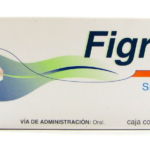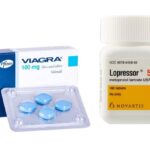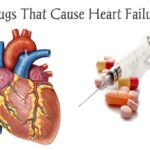List Of Drugs That Can Cause Priapism

What is priapism?
Priapism refers to the persistent and usually painful erection that lasts for more than four hours and occurs without sexual stimulation. The condition develops when blood in the penis becomes trapped and is unable to drain. If the condition is not treated immediately, it can lead to scarring and permanent erectile dysfunction.
Priapism can occur in all age groups, including newborns. Internationally, the overall incidence of priapism is 1.5 cases per 100,000 person-years. In men older than 40 years, the incidence increases to 2.9 cases per 100,000 person-years.
However, it usually affects men in two different age groups: between the ages of 5 and 10, and 20 and 50.
There are two types of priapism: low-flow and high-flow.
Low-flow priapism: This is the result of blood being trapped in the erection chambers. It often occurs without a known cause in men who are otherwise healthy, but it also affects men with sickle-cell disease, leukemia (cancer of the blood), or malaria.
High-flow priapism: This is rarer and is usually not painful. It is the result of a ruptured artery from an injury to the penis or the perineum (the area between the scrotum and anus), which prevents blood in the penis from circulating normally.
Can drugs cause priapism?
Yes, drugs and medications that have effects on the nerves in the body, including those in the penis can cause priapism because these nerves widen the arteries that supply the penis, allowing it to become engorged and erect.
What medications and drugs can cause priapism?
According to studies, the list of recreational drugs and medications that are linked with priapism includes:
Antidepressants
- Fluoxetine (Prozac)
- Bupropion (Wellbutrin XL, Wellbutrin SR)
- Trazodone
- Sertraline (Zoloft)
Alpha-blockers
- Prazosin (Minipress)
- Terazosin, doxazosin (Cardura)
- Tamsulosin (Flomax)
Antipsychotics
- Hydroxyzine (Vistaril)
- Risperidone (Risperdal)
- Olanzapine (Zyprexa)
- Lithium (Lithobid),
- Clozapine (Clozaril)
- Chlorpromazine
- Thioridazine
Erectile dysfunction medications
- Alprostadil (caverject, edex, others)
- Papaverine
- Phentolamine (oraverse)
Blood thinners
- Warfarin (Jantoven)
- Heparin
Hormones
- Testosterone
- Gonadotropin-releasing hormone
Attention-deficit/hyperactivity disorder (ADHD) medications
- Methylphenidate (Concerta, Ritalin, others)
- Atomoxetine (Strattera)
Recreational drugs
What are the signs of drug-induced priapism?
The symptoms of drug-induced priapism vary depending on whether you experience low-flow or high-flow priapism. If you have low-flow priapism, you may experience:
- erections lasting for more than four hours
- rigid penile shaft with a soft tip
- penis pain
If you have high-flow priapism, you’ll have some of the same symptoms as low-flow priapism. The main difference is that pain doesn’t occur with high-flow priapism.
If you take the above-listed drugs and have erections lasting for more than four hours contact your doctor or local emergency services. Priapism can damage the tissue in the penis and may lead to permanent erectile dysfunction when left untreated. A painful erection may also be a sign of priapism.





